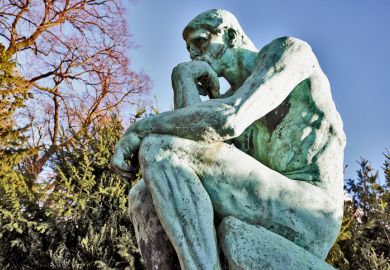" Now we know The sharply veering ways of comets, once A source of dread, nor longer do we quail Beneath appearances of bearded stars ."
Thus wrote Edmund Halley in 1687, eulogising Newton's achievement in explaining heavenly phenomena with his theory of universal gravitation. But what do we mean by saying that Newton explained the behaviour of comets? Scientific explanation suggests that we confer understanding on the phenomena, but there are two ways to cash this out. First, there is the top-down approach of deducing the phenomenon in question from a nexus of laws and principles that constitute a scientific theory. Then there is the bottom-up approach of specifying the mechanism that brings about the phenomenon in question, typically by specifying the causes of the phenomenon. Thus the comet is caused to veer by being pulled by the force of gravity from the sun, whereas the top-down approach would say that the motion of the comet is subsumed under Newton's laws of motion and his principle of universal gravitation.
Advocates of the bottom-up approach claim that the top-down enthusiasts are not explaining phenomena but providing a succinct and economical description. Top-downers respond that scientific explanation is just an economical unified description of how the physical world behaves. To bring in mysterious metaphysical concepts such as causality, of the world being pushed and pulled to behave in ways that are "unnatural" to it, is a vestige of anthropomorphic ways of thinking, of occult powers, of everything that was knocked on the head by David Hume's famous critique of causal necessity in the 18th century. As Bertrand Russell wrote in 1911:
"The law of causalityI is a relic of a bygone age surviving, like the monarchy, only because it is erroneously supposed to do no harm." If any notion of cause survives in modern science, say the top-downers, it is the Aristotelian formal cause, not the Aristotelian efficient cause.
Wesley Salmon wants to defend the bottom-up approach as complementing the top-down approach but as intrinsically superior in dealing with "problem cases".
We talk of deducing phenomena, but in many cases we are dealing with probability. Does smoking cause lung cancer? How high does the probability have to be to justify the claim that smoking explains a particular case of cancer? The philosopher Carl Hempel claimed that the probability must be greater than one half to justify this claim. In a critique of Hempel, Salmon introduced his statistical relevance model: the probability of cancer had to be greater among smokers than non-smokers for the explanatory claim to be justified.
But suppose the putative cause is negatively relevant. Consider a golfer who scores a birdie by dropping the ball in the hole after it has hit a branch. Hitting a branch generally gives a lower probability of getting a birdie, but intuitively we want to say that hitting the branch was the cause.
In the light of this sort of example, Salmon developed a causal process model in which the locus of explanation was the transmission of a causal influence by a continuous process that ended in producing the phenomenon in question.
But what is this mysterious causal influence that gets transmitted? Salmon argues for an "at-at" theory of causal processes, the influence acts here at one time and at a neighbouring point at a neighbouring time. In a continuous process there is no next event to pose the question of how one event can bring about the next. But this hardly seems an adequate response to the Humean critique, as a basis for explanation. A more devastating difficulty is that in modern quantum physics there simply are no causal processes in the classical sense that Salmon employs, so it seems to follow that the quantum theory does not explain anything. Since quantum theory is our most fundamental theory, this implies there are no fundamental explanations in science, which seems to defeat the whole aim of explicating the notion of scientific explanation.
In more recent work, Salmon identifies causal processes with the propagation of conserved quantities. He does not recognise that this leads to conflict with the general theory of relativity in which ambiguities arise in the local specification of conserved quantities such as energy and momentum - essentially the gravitational contributions to these quantities are only specified globally. So he runs into conflict, not only with quantum theory, but also with relativity theory.
The book is really a collection of essays on the topic of causality and explanation, ranging from general surveys that would be useful to a general readership, to more specialised and technical discussions that would require some detailed philosophical background on the part of the reader. Most of them have already been published and trace in somewhat repetitive detail the development of Salmon's thinking on these matters. The result is unsatisfactory - but then I have always been an unreconstructed top-downer in this area of philosophical debate.
Michael Redhead is co-director, Centre for Philosophy of Natural and Social Science, London School of Economics.
Causality and Explanation
Author - Wesley C. Salmon
ISBN - 0 19 510863 9 and 510864 7
Publisher - Oxford University Press
Price - £50.00 and £23.50
Pages - 434
Register to continue
Why register?
- Registration is free and only takes a moment
- Once registered, you can read 3 articles a month
- Sign up for our newsletter
Subscribe
Or subscribe for unlimited access to:
- Unlimited access to news, views, insights & reviews
- Digital editions
- Digital access to THE’s university and college rankings analysis
Already registered or a current subscriber? Login



